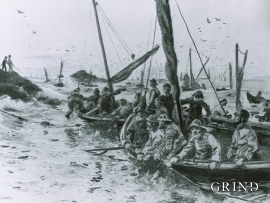
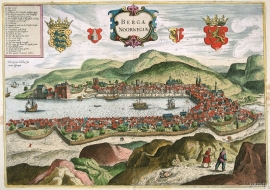
Bergen – The Urban Community
Bergen - our first royal residence city – has for centuries been Norway’s, and for long periods, Scandinavia’s biggest city. The historical monuments round the Vågen bay tell us that the city has been of national, historical significance.
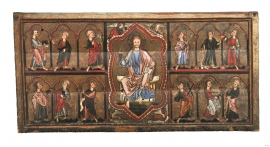
Church Art – a Message in Pictures
In the still and dim church interiors of the Middle Ages the performances of belief came to life in the gleam from the wax candles. Here the essential articles of faith were presented, here the church was presented through holy men and holy women and here the events from the Gospels were told: the angels with Maria, the birth of the baby Jesus, the Three Wise Men, the history of the drama of the Passion and the victorious Christ.
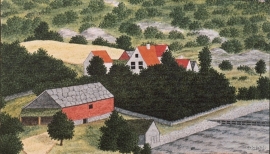
Civil Servants in Small Societies 1650 – 1850

Cultural Heritage and Cultural Landscapes
The development which culminated in the great west Norwegian clustered communities in the 18th and 19th centuries, such as we see at Havrå on Osterøy Island, actually first came into being in Viking times, with an incipient division of the farms into smaller units.

Demographic Growth – A Drive to Development
The cultural landscape or that part of it which is still green and inviting to the eye has been shaped by the farmers’ toil down through the generations. At one time almost all of us were farmers. We see that the crofting system faded away as emigration to the towns and to America relieved the pressure.
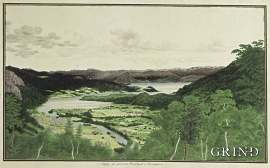
Earth and stone
"Humus" is a word with great meaning. It is the soil we live from, in addition to the resources we get from the ocean. This layer of earth - sometimes appearing as loose fertile organic matter; other places as scanty and acidic soil - is found in varying thicknesses over the bedrock. It is the result of 10,000 years of breakdown and erosion following the last ice age, and then several thousand years of cultivation in more recent times. The soil we can buy at the garden centre is a different product than the "natural" humus layer, formed of processes occurring far under the earth's surface. If you dig your spade into the soil where it has not been ploughed before, you will see that there is a big difference in colour, soil structure, moisture and stone content. We might say that the soil is fertile and easily worked some places, whereas other places folk might have given up trying to grow anything on their small patches of land, which then become overgrown with birch and thicket. Modern agriculture does not have room for small stumps between the piles of stone. Nowadays, machines do the job, and they require a lot of space and flat ground.
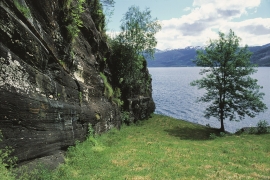
Farmers and Settlements
From 4,500 to 5,000 years ago most of Hordaland was a landscape of forest, right out to the coast and the islands. With our inner eye we can see old oak trees putting their stamp on the heat-loving deciduous forest.


